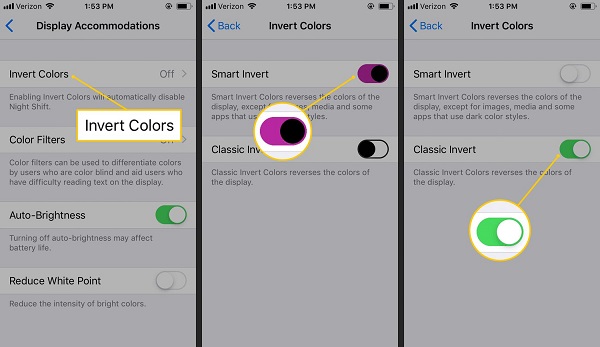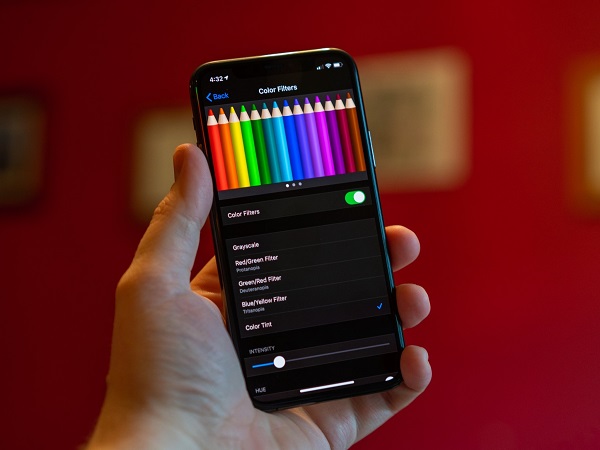In this comprehensive guide, we will delve into the world of iOS accessibility features and learn how to invert colors on your iPhone. Whether you’re looking to enhance readability, reduce eye strain, or simply give your device a fresh look, this feature can be a game-changer. We’ll explore step-by-step instructions, essential tips, and some lesser-known tricks that will help you make the most of this nifty feature.
What is Color Inversion?
Before we dive into the “how-to” part, let’s understand what color inversion is. In simple terms, color inversion is a feature that changes the color scheme of your iPhone’s display. It’s like a photographic negative, where black becomes white and white becomes black, and all the other colors are inverted accordingly. This can be a great accessibility tool for individuals with visual impairments or those who simply find it easier on the eyes.
Enabling Color Inversion

Now, let’s get to the heart of the matter – how to invert colors on your iPhone. It’s a straightforward process. Follow these simple steps:
Step 1: Open Settings
To start, open your iPhone’s Settings app. It’s the gear-shaped icon on your home screen.
Step 2: Go to Accessibility
Scroll down and tap on “Accessibility.” This is where you’ll find various features to enhance your iPhone’s usability.
Step 3: Access Display & Text Size
Inside the Accessibility menu, scroll down to the “Display & Text Size” option and tap on it.
Step 4: Invert Colors
Now, look for the “Invert Colors” option. You’ll find it under the “Vision” section. Tap on it.
Step 5: Toggle Smart Invert or Classic Invert
In the “Invert Colors” menu, you have two options – “Smart Invert” and “Classic Invert.” Choose the one that suits your needs.
- Smart Invert: This mode intelligently identifies images and media, preserving their original colors while inverting the rest. It’s great for web browsing and app usage.
- Classic Invert: This option inverts all colors on the screen, providing a true inverted display.
Step 6: Enable the Feature
Once you’ve made your choice, toggle the switch to enable color inversion. Your screen will immediately change to the selected inversion mode.
Customizing Color Inversion

Now that you’ve successfully inverted colors on your iPhone, let’s explore some customization options.
Adjusting Accessibility Shortcut
If you want quick access to the color inversion feature, you can customize the Accessibility Shortcut. Here’s how:
- Go back to the Accessibility menu.
- Scroll down to “Accessibility Shortcut” and tap on it.
- Choose “Smart Invert Colors” or “Classic Invert Colors” to set your preferred shortcut.
Now, when you triple-click the side or home button (depending on your iPhone model), you can easily toggle color inversion on or off.
Reversing the Colors of Triple-Tap
By default, when you triple-tap the screen, it turns on the color inversion. If you’d prefer to reverse this action, follow these steps:
- Return to the Accessibility menu.
- Scroll down to “Accessibility Shortcut” and tap on it.
- Choose “None” to disable the shortcut, or select “Color Filters” for another accessibility option.
This will change the triple-tap action to the selected option, allowing you to reverse colors with ease.
Benefits of Color Inversion
Now that you know how to enable and customize color inversion, let’s explore the benefits of this feature.
Enhanced Readability
For many users, inverting colors can significantly improve readability. The high contrast between text and background makes it easier to read content on your iPhone, especially in low-light conditions.
Reduced Eye Strain
Inverting colors can also reduce eye strain, making it more comfortable for prolonged usage. By having a dark background with light text, your eyes are subjected to less glare and brightness.
Accessibility for Visual Impairments
Color inversion is a valuable tool for individuals with visual impairments. It can make using an iPhone more accessible and user-friendly by providing better contrast and readability.
Unique Aesthetic
Beyond the practical benefits, some users prefer the unique aesthetic of an inverted display. It can give your iPhone a fresh, distinctive look that stands out from the crowd.
Troubleshooting Color Inversion
While color inversion is a helpful feature, you might encounter some issues or unexpected behavior. Here are some tips to troubleshoot common problems:
Color Inversion in Specific Apps
If you notice that color inversion doesn’t work as expected in certain apps, it could be due to the app’s settings. Some apps have their own display preferences that may override the system settings. Check the app’s settings to see if you can adjust the color scheme.
Flickering or Screen Issues
In rare cases, you might experience flickering or screen issues after enabling color inversion. If this happens, try restarting your iPhone. If the problem persists, it could be a compatibility issue with a particular app or iOS version. Ensure your iPhone’s software is up to date and check for app updates.
Conclusion
In this comprehensive guide, we’ve explored how to invert colors on your iPhone. We’ve covered the simple steps to enable color inversion, customization options, benefits of this feature, and troubleshooting tips. Whether you’re looking to improve readability, reduce eye strain, or simply change the look of your device, color inversion is a versatile tool at your disposal. So, go ahead and give it a try – it’s just a few taps away in your iPhone’s Accessibility settings. Enjoy a more comfortable and visually appealing experience with your iPhone today!
Read Also

